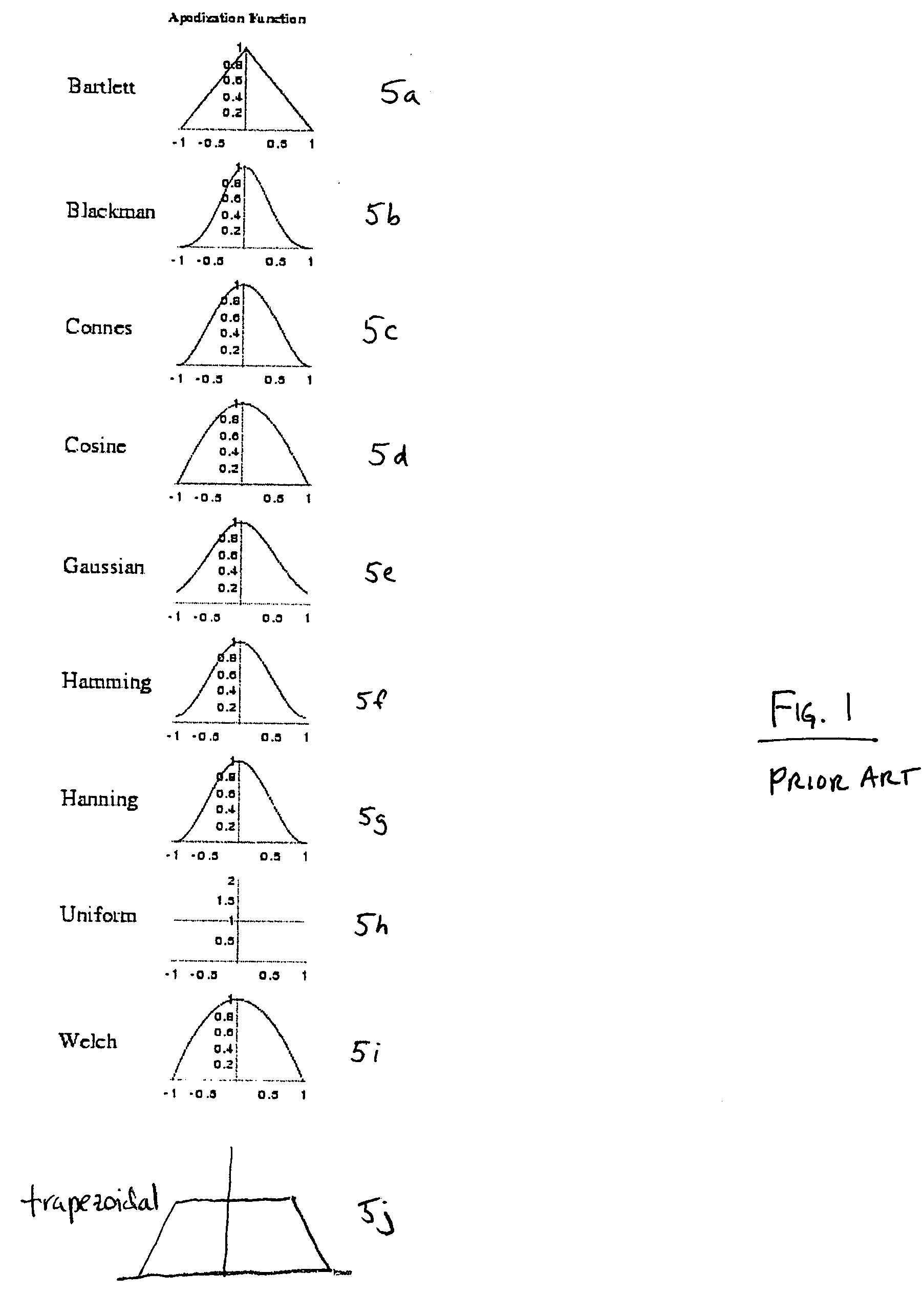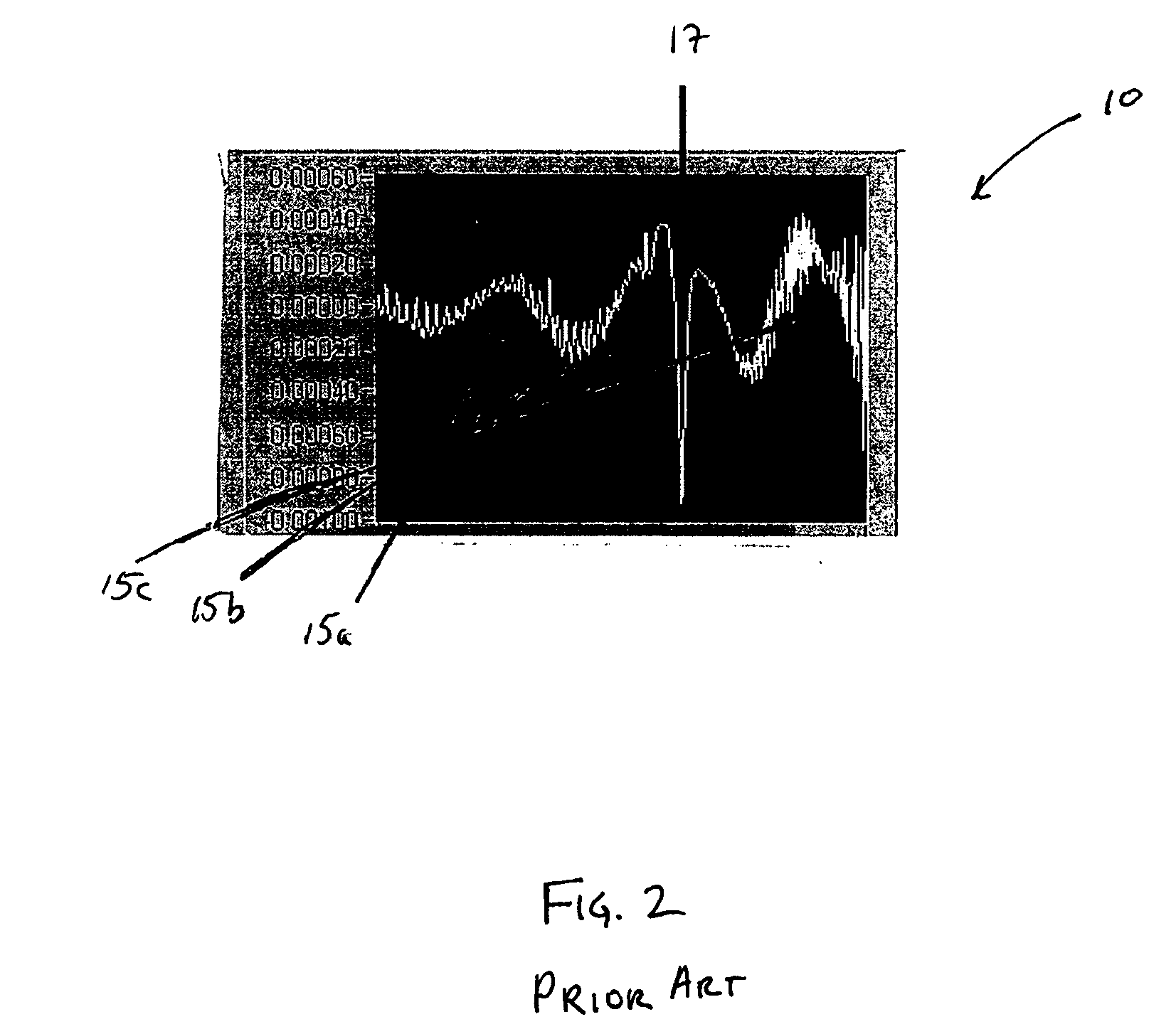Method and apparatus of signal processing for use in spectrometry using an improved apodization function
a signal processing and spectrometry technology, applied in the field of signal processing for use in spectrometry using an improved apodization function, can solve the problems of difficult use of theoretical methods, difficulty in analysis of the resulting auto-referenced spectra, and difficulty in analyzing the original and deresolved interferogram signals to remove artifacts, so as to reduce, if not eliminate, the background and artifact signals of low and medium frequency instruments.
- Summary
- Abstract
- Description
- Claims
- Application Information
AI Technical Summary
Benefits of technology
Problems solved by technology
Method used
Image
Examples
Embodiment Construction
[0047] An improved apodization function is provided that is capable of being executed by a processor or other computing device to generate an apodization waveform, for use in signal processing, such as infrared spectrometry. According to the invention, the apodization waveform includes multiple segments in series whereby each segment corresponds to a different weight profile. According to one embodiment, the apodization function can be a summation of two or more constituent apodization functions in series, capable of producing an apodization waveform where each segment of the waveform has a weight profile of one of the constituent apodization functions. The two or more constituent apodization functions can be selected depending on the particular application.
[0048] For example, FIG. 3A is a diagram illustrating an apodization waveform that corresponds to an apodization function according to one embodiment. In this embodiment, the apodization function is a series summation of a unit ...
PUM
 Login to View More
Login to View More Abstract
Description
Claims
Application Information
 Login to View More
Login to View More - R&D
- Intellectual Property
- Life Sciences
- Materials
- Tech Scout
- Unparalleled Data Quality
- Higher Quality Content
- 60% Fewer Hallucinations
Browse by: Latest US Patents, China's latest patents, Technical Efficacy Thesaurus, Application Domain, Technology Topic, Popular Technical Reports.
© 2025 PatSnap. All rights reserved.Legal|Privacy policy|Modern Slavery Act Transparency Statement|Sitemap|About US| Contact US: help@patsnap.com



